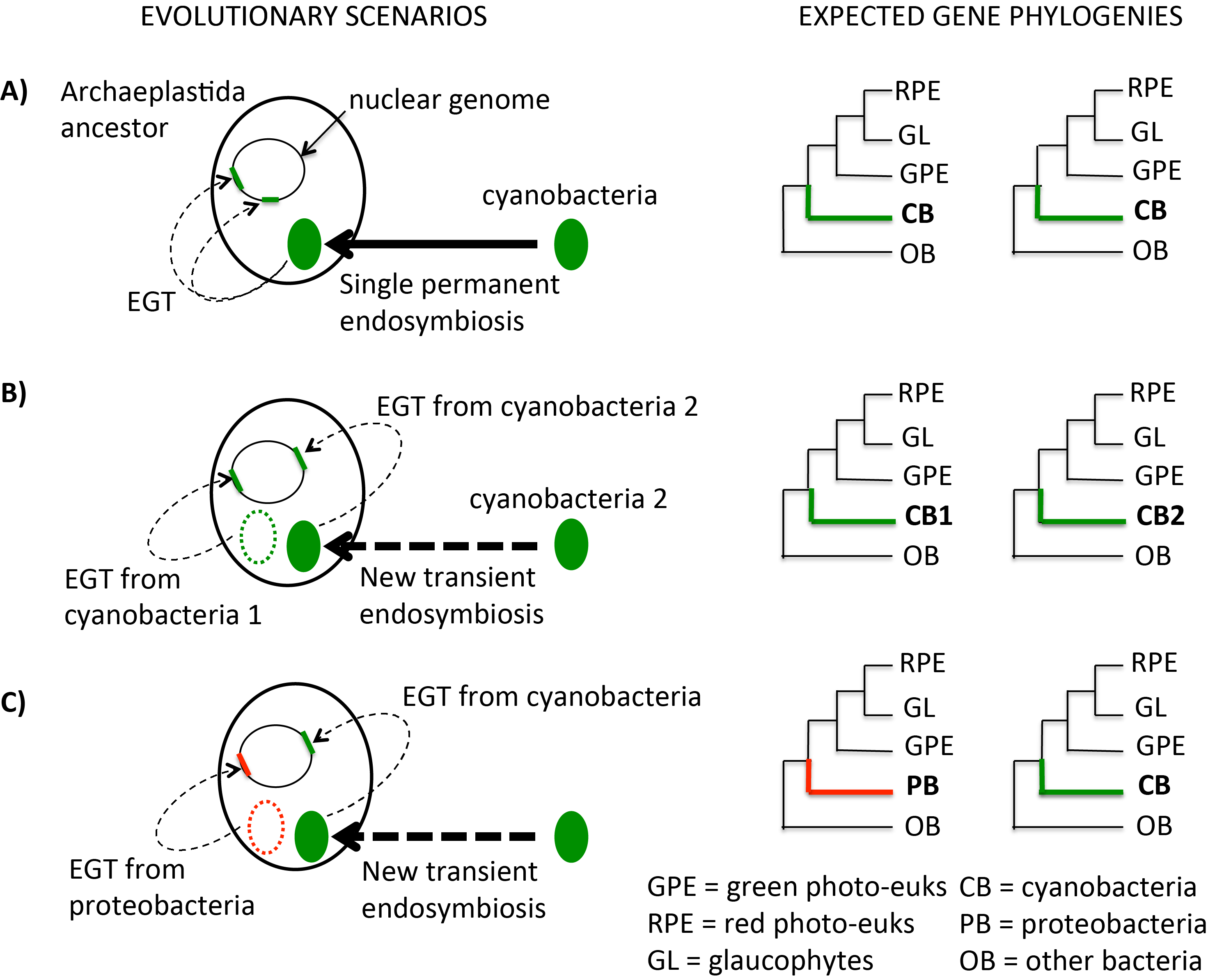

Horizontal transfer from the bacterial symbiont to the eukaryotic host (Endosymbiotic Gene Transfer – EGT), which is more likely to occur in stricter endosymbiotic relationships, has been involved in important features in eukaryotic evolution, more noticeable photosynthesis. Since multiple photosynthetic eukaryotes acquired their plastids through secondary and tertiary symbiosis, the history of photosynthesis in eukaryotes has become one of the most intricate chapters in evolutionary history. Instead of focusing on the entire puzzle, I am interested in a particular event, the acquisition of the primary plastid that arguably occurred in the ancestor of the Archaeplastida. There is strong evidence supporting the hypothesis that multiple transient endosymbioses occurred in the ancestor of Archaeplastida and that genes transferred from those transient symbionts to the nuclear genome of the host were critical to getting to the well-established current chloroplast. This hypothesis can be tested by exploring the phylogeny of nuclear gene families associated to photosyntesis with a robust database that includes a rich sampling of Archaeplastida and Bacterial genomes (among other eukaryotic and prokaryotic genomes).

These are three different scenarios about the acquisition of the primary plastid, which can be explored by analyzing the phylogenetic history of ancient EGT events involving nuclear photosynthetic gene families.
Department of Plant Biology
Carl R. Woese Institute for Genomic Biology
University of Illinois at Urbana – Champaign
1206 W Gregory Dr, Urbana, IL 61801
mceron [at] illinois [dot] edu
© 2023. Mario A. Cerón-Romero